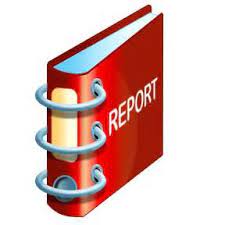
Lindanet Final Report
You can now consult the final report of the Lindanet project: results and main achievements
LINDANET is an ambitious project that aims to join efforts among European regions to work together towards the improvement of the HCH (Lindane) contaminated sites.
Lindane was a pesticide widely produced during second half of the 20th century around Europe and the world. Lindane production generated huge amounts of high pollutant organochlorinated compounds (HCH isomers and others) which present high persistence, high toxicity, and carcinogenic, bioaccumulative and endocrine disrupting properties. For example, several isomers of HCH are included in the list of the Persistent Organic Pollutants (POPs) of the Stockholm Convention.
Lindane production and use has been prohibited in EU regulation from 2007, but the Lindane related pollution still represents a very important risk for the human health and european environment and is still a quite unknown problem by the population and the political representatives.
So, the intention of the LINDANET project is to advance in the direction of improve the knowledge and solution of this problem, starting from a regional point of view and reaching a European level.
For this, the project has set the following general objectives:
• To create a network of European regions affected by the contamination derived from the lindane production wastes (HCH and others),
• To establish an Action Plan focused to the problem solution in each region,
• To interchange experiences and knowledge that contribute to the solution of the contamination derived from the lindane and lindane production wastes,
• To involve the stakeholder groups in the knowledge and the solution to the problem,
• To contribute to the Policy Learning Platform of the Interreg Europe programme,
• To raise public awareness about the HCH pollution and other related contamination problems derived from POPs and Obsolete Pesticides.
€1,348,635.00
Environment and resource efficiency
This policy instrument addresses a serious territorial problem of soil contamination in Aragon: the contaminated sites where the already extinct INQUINOSA factory developed its activity, contamination that is related to the production from 1974 to 1989 of the biocide called lindane.
The policy instrument performs actions on the old facilities of INQUINOSA factory, at the Industrial park "La Fosforera" in Sabiñánigo (Huesca), located beside residential areas, as well as on the suburban area of Sabiñánigo in two landfills where the waste from the lindane production was dumped: Sardas landfill and Bailin landfill.
Operations approved within the Specific Objective OE.6.5.1. are destined to the control and containment of the contamination to guarantee the water use for drinking and irrigation, as well as to the activities of characterization of the old INQUINOSA site and buildings. Thus, the current operations are focused in conventional methods of control and containment of the contamination, due to the fact that there is not a known solution to treat this contamination till its complete removal.
To improve this policy instrument, actions should be oriented to the search of new solutions to treat and remove HCH in these sites.
Indeed, the Government of Aragon is doing efforts towards this objective by elaborating a first version of Strategic Action Plan against the lindane waste contamination in Aragon, under continuous review, which is going to be improved with LINDANET outputs.
The investment priority 6E remarks the fact that soil is a finite and valuable resource whose quality must be guaranteed.
According to specific objective 11, unexploited lands in Saxony-Anhalt cover a surface of around 250km2. This unexploited lands are often affected by soil contamination due to urban and rural activities, constituting a threat for humans, animals and environment. Thus, some of the objectives of specific objective 11 are the restoration of the non-exploited contaminated lands, so that they can be transformed to conversion areas in urban and peri-urban environments, if necessary.
Some of the measures described to achieve this specific objective, are:
• Development and restoration of non-exploited areas and compatible conversion areas
• Remediation of brownfields
• Remediation of contaminated sites to prepare them for a future use within the regional development
With regard to contamination with Hexachlorcyclohexane resulting from LINDAN production remediation of the contaminated sites is highly challenging. Participation in the project LINDANET allows for learning from the partnership’s experience with regard to short- and long-term effects of remediation measures and thus improves decision making on the right set of measures in Saxony-Anhalt.
According to what established in the Galicia FEDER 2014-20 OP, in those actions to be financed within priority of investment 6.a, measures destined to the prevention and the reduction of waste, the development of separation, selective collection and domestic and industrial waste recycling will be prioritised, toguether with the industrial prevention, control and monitoring, aimed to the reduction of the soil contamination. Within the framework of this priority of investment, actions related to the prevention of soil contamination, as well as the management of potentially contaminated sites will be promoted.
On the other hand, in actions to be financed within priority of investment 6.d, measures destined to the restoration of degraded areas will be prioritised. Among them studies to determine the soil conditions and restoration of affected soils can be elaborated.
Currently, actions are being undertaken for the remediation of soils in natural spaces, by means of remediation, restoration and cleaning of non-controlled dumping spots.
This policy instrument could be improved with new measures related to HCH decontamination.
The 2014-2020 Operational Programme Environment (OPE) builds on the OPE from a previous period. It aims to protect and ensure the quality of the living environment of the Czech population, promoting the efficient use of resources, eliminating the negative impacts of human activities on the environment and climate change mitigation.
The Priority Axis 3 (PA 3) is related to environmental waste management, from the base of waste prevention to the inventorisation and removal of environmental burdens. The PA 3 is also focused on reducing environmental risks and developing systems for their management.
In the framework of the PA3 Specific Objective 4 (SO 4), and inventory of contaminated and potentially contaminated sites will be elaborated, categorising priorities for the selection of the most severely contaminated sites to be remediated. A planned activity is the remediation of seriously contaminated sites.
Thus, this policy instrument is aiming to eliminate contamination and risks deriving from it for the most seriously contaminated sites that may pose serious risks to human health or the environment.
The improvement will be done in focusing on the policy instrument on the more specific target group of pollutants. The policy instrument should concern specifically with the pesticide pollutants, which were widely used in agriculture in past. And for the future production is very important to map the situation of this kind of pollutants.
The Project falls under the ROP 2014-2020 investment priorities:
-6a: Investing in the waste sector to meet the requirements of the Union's environmental acquis and to address needs, identified by the Member States, for investment that goes beyond those requirements
-6d: Protecting and restoring biodiversity and soil and promoting ecosystem services, including through Natura 2000, and green infrastructure
This policy instrument undertakes activities aimed at supporting projects in the field of waste management through the construction/development/modernisation of municipal waste recovery and disposal plants, as well as comprehensive disposal of hazardous waste such as lindane. This will contribute to the reduction of waste threatening the inhabitants and environment of the region.
Support for investments under this measure will be possible if these projects result from the Regional Waste Management Plan (VWMP) and the investment plan for waste management.
One of the activities described in the VMNP is the disposal of hazardous waste such as plant protection products, including DDT and lindane, which was stored in excavations. Support will be granted to investments for cleaning up the hazardous waste and for ensuring safe waste disposal.
The Project will allow to take into account new products and services related to the hazardous waste. This will contribute to the environmental protection and will introduced them into the affected municipalities and even out of their limits.
The National Program of Health Research (NPRS), as other funds of the Italian Ministry of Health derive, in fact, from the resources that the State allocates with the aim of improving and promoting the health care of its citizens. The goal of the NPRS is the health promotion and personal care.
In what refers to the project scope, the NPRS undertakes initiatives aimed at supporting activities in the field of food and feed contamination management through the development/modernisation of a network system able to monitor the state of art of the real pollution of the National interest Sites.
Within this framework, measures destined to the prevention and the reduction pollution need to be prioritised, which include the food control and monitoring, aimed to the reduction of food contamination.
Exchange of information and experience within the LINDANET project partners, will favour the decision-making process of the HCH contamination of the Sacco river valley site and will allow the improvement of the actions to be taken related to the prevention of food and feed contamination.

You can now consult the final report of the Lindanet project: results and main achievements
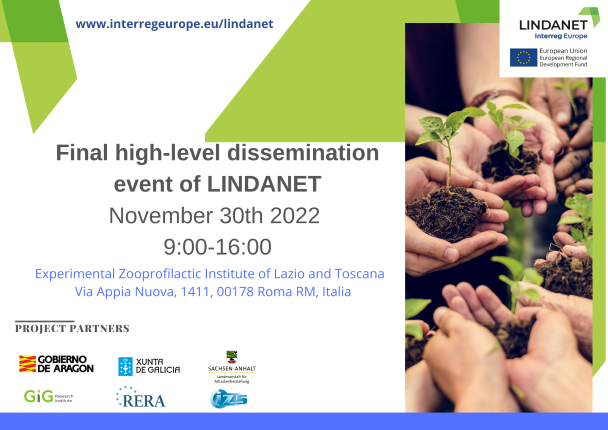
Lindanet interregional project: the European network meets in Rome and returns to Colleferro for the final dissemination event
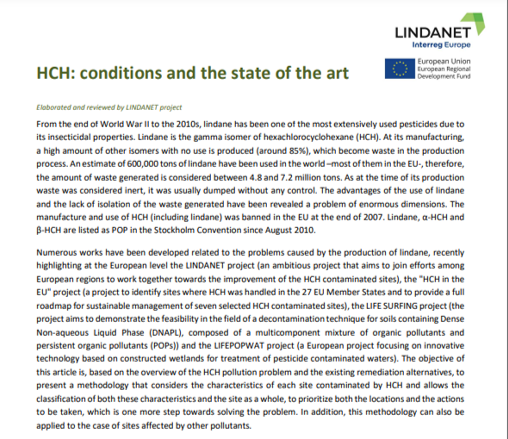
Lindanet project article about HCH: conditions and the state of the art

UPDATE ON ACTION PLANS IMPLEMENTATION LINDANET Project_JULY 2022
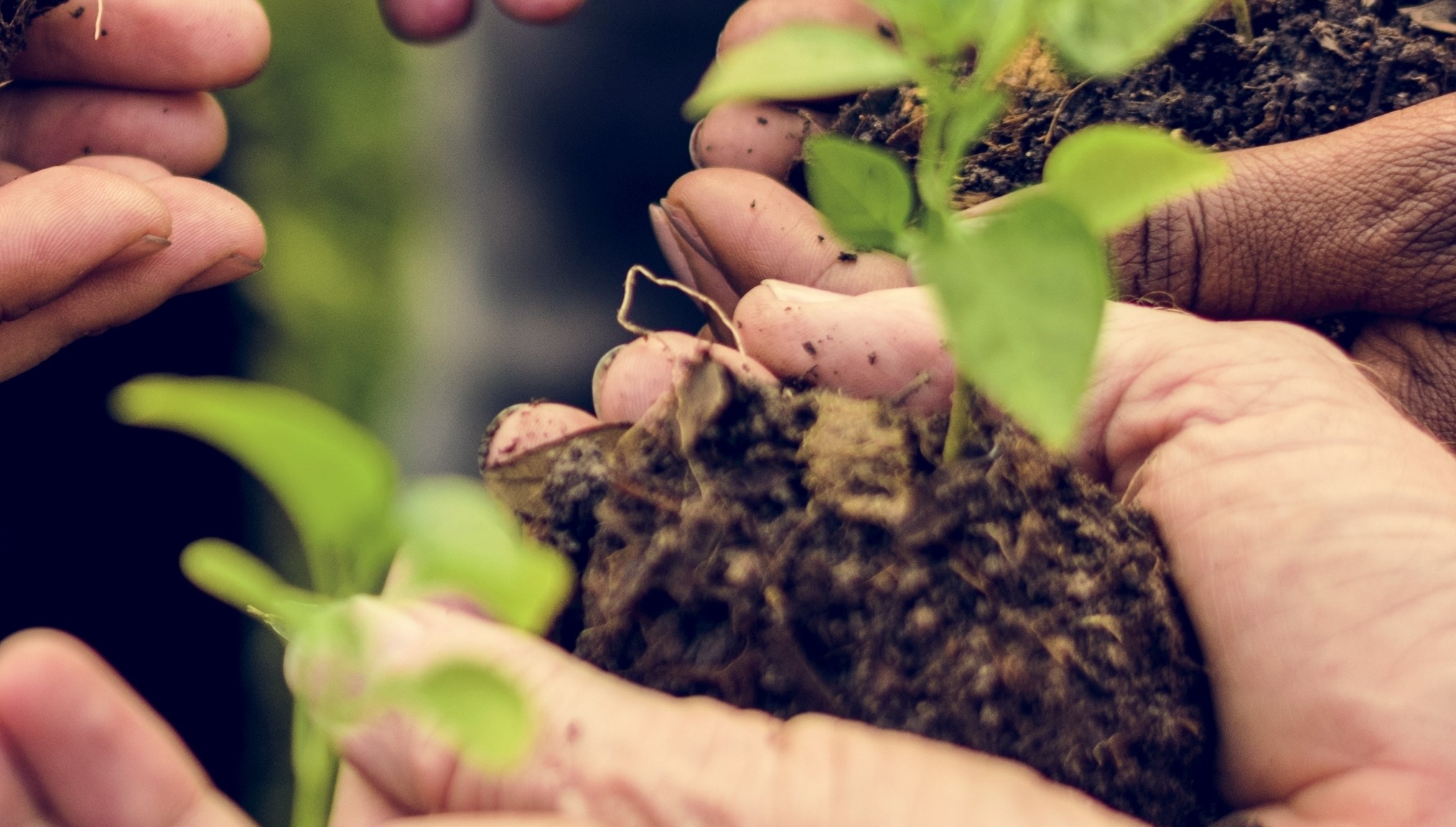
On March 16, 2022, LINDANET partners organized a webinar to report on soil contamination by HCH in Europe and the progress made within the LINDANET project.
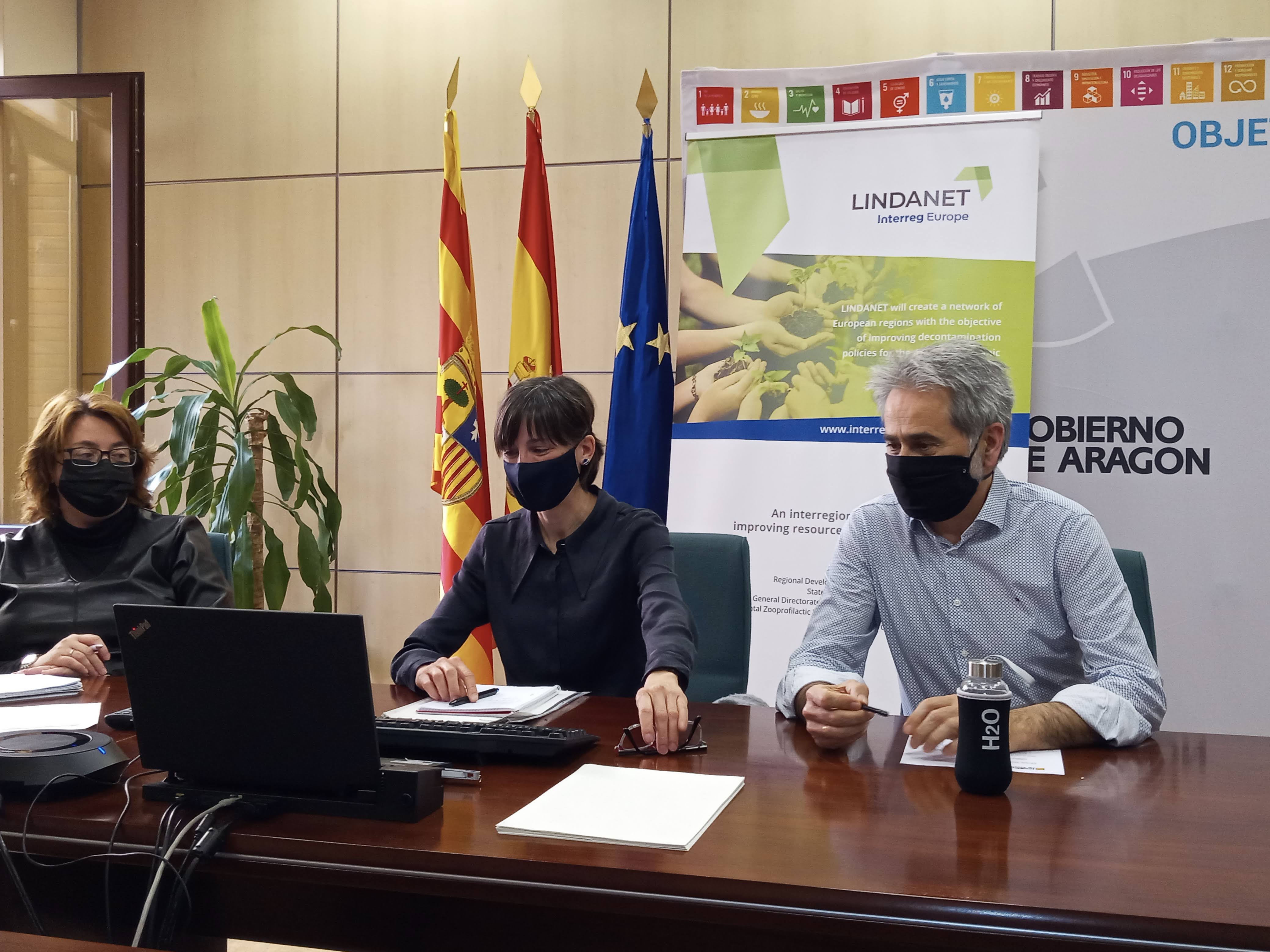
The 4th and 5th stakeholder meeting brought together representatives from the GA, the Institutional and Social Committees
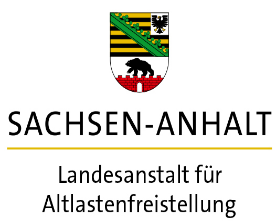
The 5th regional workshop aimed to update our Stakeholders on the progress made in LINDANET as well as on the upcoming steps in Phase 2 and afterwards
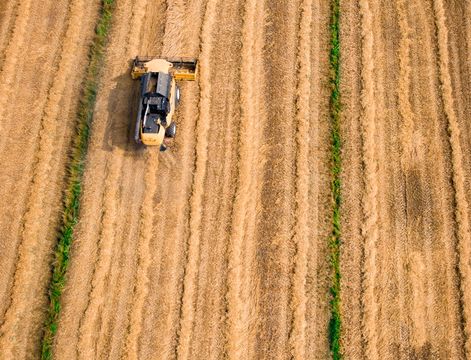
Description of the experimental Lindanet action plan of IZSLT, progress of the activities of the policy instruments in the Sacco Valley
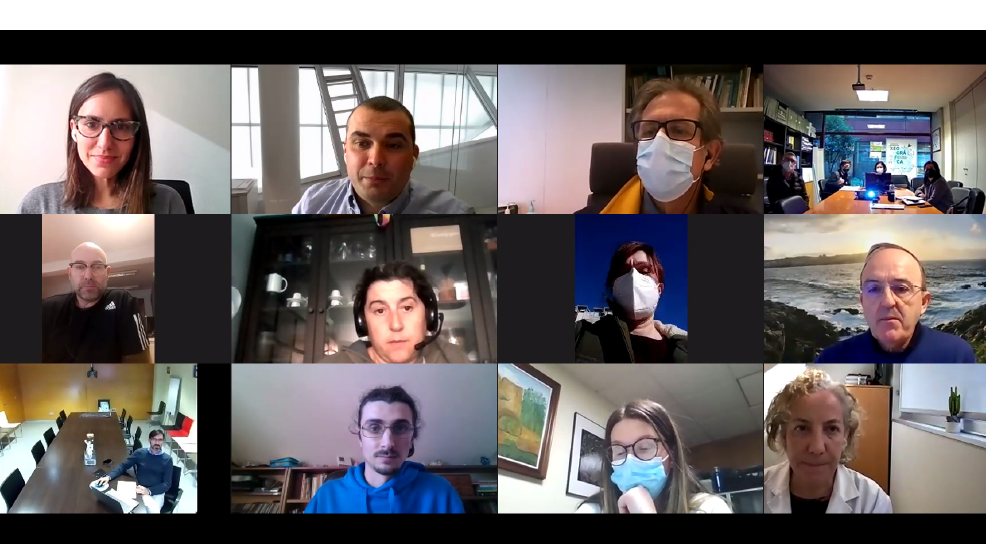
The event took place on the 31st of January of 2022 between 14:00 and 15:00 CET and it was
celebrated through videoconference due to COVID-19 restrictions.
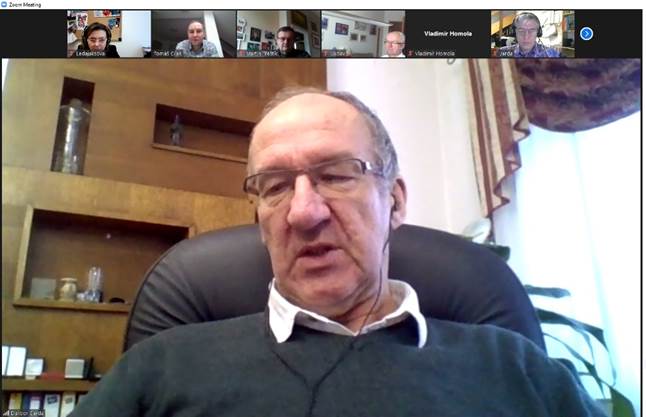
Introduction to the topic of the 4th and 5th Interregional Thematic Workshop - the preparation and presentation of proposed Regional Action Plans